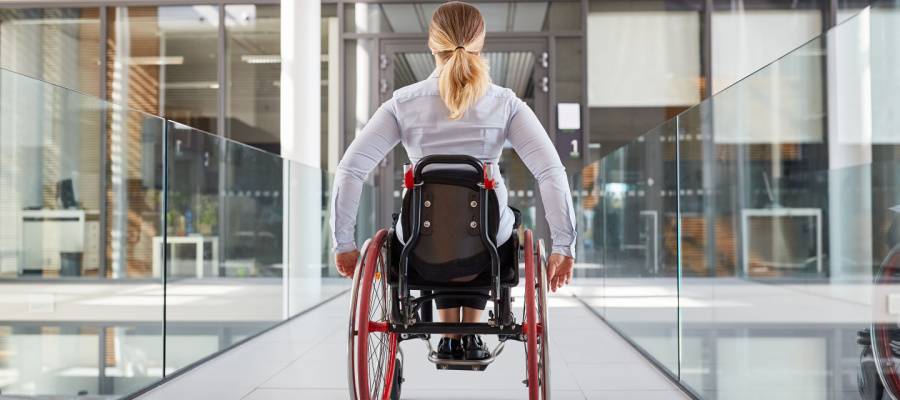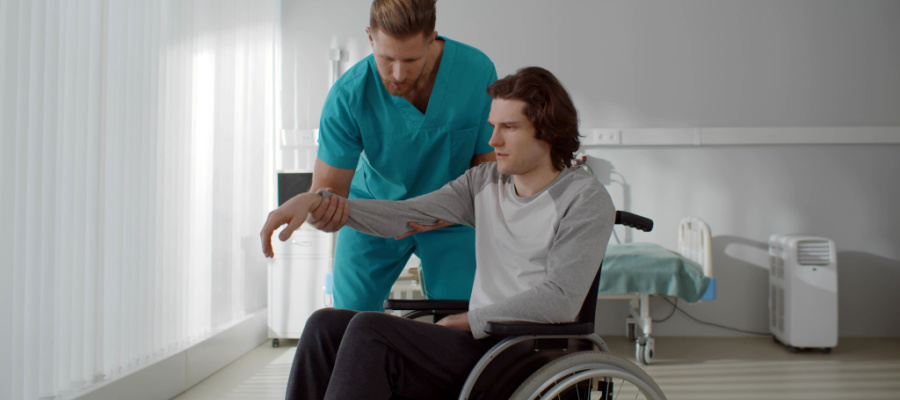What is the First Stage of Paralysis?
Paralysis is a condition characterized by the loss of the ability to move or control muscles in certain parts of the body. It can be caused by various conditions, including spinal cord injuries, stroke, neurological diseases, and trauma. Understanding the stages of paralysis can help individuals and caregivers provide appropriate care and anticipate the potential challenges ahead. At Devoted Helpers, based in Sugar Land, Texas, we specialize in providing compassionate care for those affected by paralysis, ensuring that they receive the necessary support throughout their journey.
In this article, we will discuss the first stage of paralysis, including how it manifests, its underlying causes, and how individuals can begin their path to treatment and recovery.
Understanding the First Stage of Paralysis
The first stage of paralysis is typically referred to as the “acute phase” or “initial onset” of paralysis. This is when the loss of muscle function occurs due to a sudden injury or a neurological event, such as a stroke or spinal cord injury. During this stage, the primary focus is often on diagnosing the cause, stabilizing the patient, and preventing further damage.
Key Characteristics of the First Stage of Paralysis
- Sudden Loss of Movement – The first stage typically involves the immediate or gradual loss of muscle function in the affected areas, which may include partial or complete paralysis of the body.
- Loss of Sensation – In many cases, paralysis is accompanied by a loss of sensation in the affected area. The person may no longer feel pain, temperature, or touch in the paralyzed region.
- Neurological Symptoms – Depending on the underlying cause, individuals may also experience other neurological symptoms such as numbness, tingling, or weakness in the limbs, difficulty speaking, or problems with coordination and balance.
- Spinal Shock (In Spinal Cord Injuries) – If the paralysis is due to a spinal cord injury, the first stage often involves spinal shock, a temporary condition where there is a complete loss of reflex activity and muscle tone below the level of injury. This can result in total immobility and a loss of bladder and bowel control.
Common Causes of Paralysis in the First Stage
The first stage of paralysis can result from various causes. The most common include…
Spinal Cord Injury (SCI)
- Trauma – Accidents, falls, or injuries that damage the spinal cord can lead to paralysis. The severity depends on the level of the spinal cord injury. Injuries at the cervical level (neck) may cause quadriplegia, while injuries at the thoracic or lumbar levels may result in paraplegia.
- Spinal Shock – This is a temporary loss of all reflexes and sensations below the injury level, which can occur immediately after the spinal cord injury.
Stroke
- A stroke occurs when the blood flow to the brain is disrupted, causing brain cells to die. If the stroke affects the motor control areas of the brain, it can result in paralysis on one side of the body (hemiplegia). The first stage of stroke-related paralysis involves the sudden onset of weakness or paralysis, often accompanied by numbness or difficulty speaking.
Neurological Conditions
- Multiple Sclerosis (MS) – MS is a chronic autoimmune disease that damages the protective covering of nerve fibers in the brain and spinal cord. The first stage of paralysis in MS is typically marked by sudden weakness, numbness, or loss of coordination in one or more limbs.
- Guillain-Barré Syndrome (GBS) – GBS is an autoimmune disorder where the immune system attacks the peripheral nervous system. The first stage of GBS often involves weakness or paralysis starting in the feet and legs, which then progresses upward.
Trauma or Injury to the Brain
- Traumatic brain injuries (TBI) can also result in paralysis. The first stage of paralysis from TBI is often immediate loss of movement or control, often combined with other symptoms such as confusion, difficulty breathing, or loss of consciousness.
Signs and Symptoms of the First Stage of Paralysis
The symptoms of the first stage of paralysis can vary depending on the underlying cause, but common signs include…
- Sudden Weakness – The affected area may lose strength, making it difficult to move or control muscles.
- Numbness or Tingling – Many individuals experience a tingling or “pins and needles” sensation in the limbs or other affected areas.
- Loss of Reflexes – A person may lose the reflex responses in the paralyzed area, which is often noted in spinal cord injuries and strokes.
- Inability to Perform Daily Tasks – In the early stages of paralysis, the person may have difficulty with basic activities, such as walking, eating, or speaking, depending on the extent and location of the paralysis.
Diagnosis and Immediate Treatment
During the first stage of paralysis, medical professionals will conduct a thorough evaluation to determine the underlying cause and extent of the paralysis. This often includes imaging tests such as CT scans, MRIs, and neurological exams.
For Spinal Cord Injuries (SCI)
- Stabilization – One of the first priorities is stabilizing the spine and preventing further damage. This may involve surgery, medication, or physical therapy to address the injury.
- Spinal Shock Management – If spinal shock is present, treatments may focus on managing blood pressure, preventing infection, and providing support for organ function until the body begins to recover.
- Breathing Support – In cases where paralysis affects the respiratory muscles, patients may require mechanical ventilation or other breathing assistance.
For Stroke
- Emergency Treatment – Stroke victims need to receive prompt medical treatment to restore blood flow to the brain. This may involve medications such as tissue plasminogen activator (tPA) or surgical interventions, depending on the type of stroke.
- Neurorehabilitation – After the immediate treatment, rehabilitation programs focused on regaining movement and function will begin. This could include physical therapy, occupational therapy, and speech therapy.
For Neurological Conditions
- Disease-Modifying Treatments – In conditions like multiple sclerosis or Guillain-Barré Syndrome, treatment typically focuses on modifying the disease process and managing symptoms. Medications may be prescribed to reduce inflammation, improve nerve function, or prevent further damage.
Recovery and Rehabilitation
After the first stage of paralysis, which typically involves immediate treatment and stabilization, patients will begin the rehabilitation process. The recovery process varies depending on the cause and severity of the paralysis…
- Physical Therapy – Physical therapy is essential for regaining movement, strength, and coordination. It helps individuals with paralysis to improve their range of motion, prevent muscle atrophy, and regain independence in daily activities.
- Occupational Therapy – Occupational therapy focuses on helping individuals adapt to daily tasks and use assistive devices (such as wheelchairs, grab bars, or adapted tools) to improve their quality of life.
- Psychological Support – The emotional impact of paralysis can be significant, and mental health support, including counseling and support groups, is often necessary for both patients and their caregivers.


